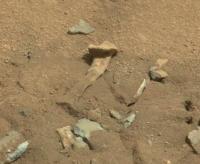DNAInfo|Chicago reports that HitchBOT, a hitchhiking robot, is en route to Chicago — if the kindness of strangers allows, of course. Yes, this is as fantastic as it sounds. The future has finally arrived, and it is one in which shiftless hobo-robots use their robo-thumbs to traverse our dusty highways.
From the article:
Chicagoans may soon have the chance to meet HitchBOT, a Canadian hitchhiking robot setting out on a journey across the U.S. with a stop in Chicago.
The robot, made out of a beer bucket and pool noodles, relies on the kindness of strangers to pick it up and has made several successful trips abroad. […] The robot has a GPS and a camera, microphone and speaker, and can access Wikipedia knowledge for its conversations. It posts to social media to track its progress and adventures, but won’t post a photo of a person without permission. HitchBOT also displays its “emotions” via an LED face. It charges by solar panel and car powerboutlet, and will let drivers know if it gets low on battery.
Check out this video explaining HitchBOT:
What’s the basic raison d’être behind HitchBOT? According to its creator, the project is an exploration of trust: between robots and humans. According to Dr. David Harris Smith, co-creator of HitchBOT (quoted in Boston Magazine), “trust is a very important part of this experiment […] There’s this issue of trust in popular media where we see a lot of dystopian visions of a future with robots that have gone rogue or out of control. In this case, we’ve designed something that actually needs human empathy to accomplish its goals.”



